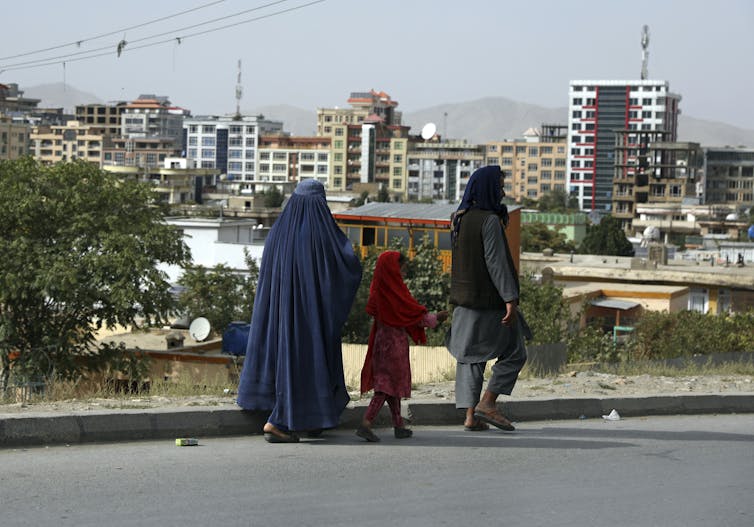
Now that the Taliban have reportedly taken full control of Afghanistan and begun forming a government, a looming challenge awaits: How will they keep their country and economy afloat financially?
For the past 20 years, the U.S. government and other countries have financed the vast majority of the Afghan government’s non-military budget – and every cent of the fighting force that melted to the Taliban so quickly in August 2021. Now, with American aid likely out of the question and billions in central bank foreign reserves frozen, the Taliban will have to find other means to pay for salaries and support citizens and infrastructure.
I’ve been studying the finances of the Taliban and American-backed government for many years as an economic policy analyst at the Center for Afghanistan Studies. Understanding how the Taliban will pay for their government begins with the last time they were in power over 20 years ago.

Afghanistan has changed a lot
In the 1990s, Afghanistan was a very different country.
The population was under 20 million and relied on international aid groups for the few services they could provide. In 1997, for example, the Taliban government had a budget of just US$100,000, which was barely enough for the salaries of government officials, let alone the entire country’s administrative and development needs.
Today, Afghanistan has changed markedly. The population has grown significantly, and its citizens increasingly came to expect services such as health care, education and basic utilities. In 2020, for example, Afghanistan had a non-military budget of $5.6 billion.
As a result, Kabul has been transformed from a war-ravaged city into a modern capital, with a growing number of high rises, internet cafes, restaurants and universities.
Most of the developmental and infrastructure spending that has taken place since 2001 has come from other countries. The U.S. and other international donors covered about 75% of the government’s non-military spending during those years. In addition, the U.S. spent $5.8 billion since 2001 on economic and infrastructure development.
Still, government revenue was beginning to cover a growing share of domestic spending in recent years. Sources included customs duties, taxes, income from fees on services like passports, telecommunications and roads, as well as revenue from its vast but mostly untapped mineral wealth.
Revenue would have been a lot higher were it not for the government’s endemic corruption, which some experts and officials cite as a key reason for its downfall. A report from May 2021 suggested that $8 million was being embezzled out of the country every day, which would add up to about $3 billion a year.

 How Crypto Works?
How Crypto Works?  Why Is Crypto Down? The Truth.
Why Is Crypto Down? The Truth.  Cleveland Clinic Bans Severely Ill Ohio Man From Kidney Transplant Because The Donor Isn’t Vaccinated
Cleveland Clinic Bans Severely Ill Ohio Man From Kidney Transplant Because The Donor Isn’t Vaccinated  LOUISIANA WILL EXPUNGE YOUR CRIMINAL RECORD IF YOU AGREE TO GET VACCINATED
LOUISIANA WILL EXPUNGE YOUR CRIMINAL RECORD IF YOU AGREE TO GET VACCINATED  Kraft Heinz CEO says people must get used to higher food prices
Kraft Heinz CEO says people must get used to higher food prices 


